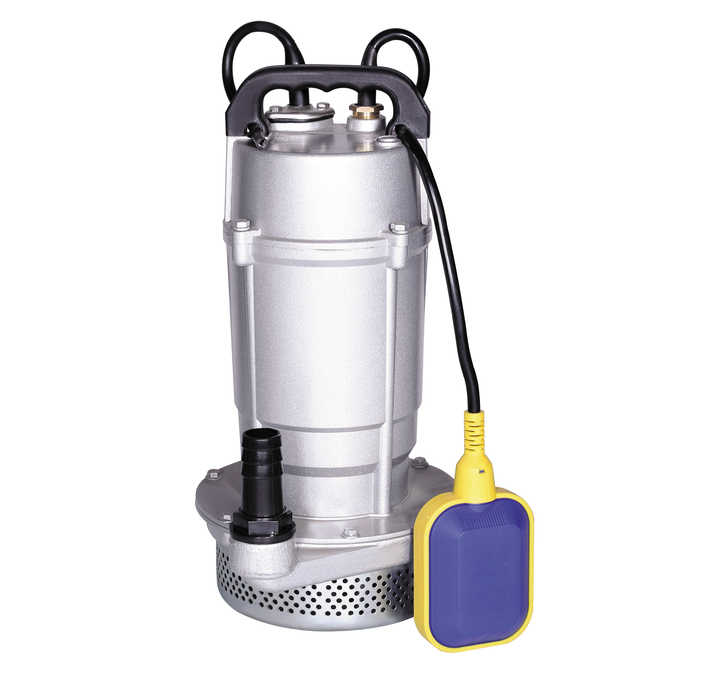Fast Solutions for Caring for a Sump Pump
Fast Solutions for Caring for a Sump Pump
Blog Article
We've encountered this post about How to Care for Your Sump Pump directly below on the internet and reckoned it made perfect sense to quickly share it with you on my blog.

Sump pumps are vital parts in several homes, specifically in areas vulnerable to flooding or excessive wetness. They help stop water damages by effectively getting rid of excess water from basements or crawl spaces. Nevertheless, like any other appliance, sump pumps require routine upkeep to ensure they function successfully when needed one of the most. Cleansing your sump pump is an important part of its upkeep, and recognizing just how to do it correctly can conserve you from pricey fixings and possible disasters.
Introduction
Preserving a tidy sump pump is vital for its correct functioning and long life. Disregarding this important job can result in clogs, malfunctions, and ultimately, water damages to your residential property. For that reason, learning how to clean a sump pump is important for property owners that count on these devices to maintain their cellars dry and secured.
Recognizing the Sump Pump
Before diving right into the cleansing procedure, it's essential to have a fundamental understanding of just how a sump pump functions. Typically set up in a pit or container listed below the cellar flooring, a sump pump contains numerous key components, including a pump, a float switch, and a discharge pipeline. When water accumulates in the pit, the float button triggers the pump, which after that pumps the water out with the discharge pipe, far from the structure's foundation.
Indicators of a Dirty Sump Pump
Understanding when your sump pump requires cleaning is crucial for stopping potential malfunctions. Some typical signs that show an unclean sump pump consist of unusual sounds throughout procedure, reduced water flow, and visible debris in the pit. If you discover any of these signs and symptoms, it's vital to cleanse your sump pump quickly to prevent any kind of more problems.
Preparing for Cleaning
Before you begin cleansing your sump pump, it's vital to take some security preventative measures. Beginning by shutting down the power to the pump to prevent any electric crashes. In addition, use ideal protective gear, such as handwear covers and safety glasses, to safeguard yourself from dust, debris, and potential virus.
Detailed Overview to Cleansing a Sump Pump
Shutting down the Power
Begin by detaching the power supply to the sump pump to stop any crashes while cleaning.
Eliminating Particles and Dirt
Make use of a bucket or a scoop to get rid of any type of visible particles, dust, or sediment from the sump pit. Dispose of the particles properly to stop it from obstructing the pump or the discharge pipe.
Cleaning up the Pump and Float Switch
When the pit is clear of particles, carefully get rid of the pump from the pit. Evaluate the pump and the float switch for any type of indications of damages or wear. Use a soft brush or fabric to clean up the surface areas and eliminate any type of collected grime.
Purging the System
After cleaning the pump and float button, flush the sump pit with clean water to get rid of any remaining dirt or sediment. This will help guarantee that the pump runs efficiently and successfully.
Checking for Correct Performance
Prior to reinstalling the pump, execute a fast test to make certain that the float button activates the pump properly. Put some water right into the sump pit and observe the pump's operation. If whatever is functioning properly, you can reassemble the pump and reconnect the power supply.
Upkeep Tips to Maintain Your Sump Pump Clean
In addition to periodic cleaning, there are numerous upkeep ideas you can follow to keep your sump pump in ideal problem:
Conclusion
Cleansing your sump pump is an important aspect of its upkeep and guarantees that it operates successfully when you need it one of the most. By adhering to the actions outlined in this guide and including normal upkeep into your routine, you can prolong the life-span of your sump pump and protect your home from water damages.
6 STEPS ON HOW TO CLEAN A SUMP PUMP PROPERLY
UNDERSTANDING SUMP PUMPS
Your sump pump plays a crucial role in protecting your home by managing and removing excess water. It primarily functions as a “shield”, guarding your basement against the damaging effects of water accumulation. The pump is housed in a sump pit in the lowest part of your basement, and its job is to pump out any water that collects there.
During heavy rainfalls or when snow melts rapidly, water can infiltrate your basement, posing potential risks like flooding, structural damage, and harmful mold growth. Here, the sump pump springs into action, pumping out the intruding water and directing it away from your home.
SAFETY FIRST
Before cleaning, remember to prioritize safety. Disconnect the sump pump from the power source to prevent any accidental electric shocks. Also, wear sturdy gloves to protect your hands from any sharp or dirty components within the pump.
REMOVE THE SUMP PUMP
After ensuring your safety, the next step is to remove the sump pump from its pit. Doing this might require careful maneuvering as you don’t want to damage any pump components. Once removed, clean the sump pit to remove any accumulated debris or sludge.
INSPECT THE PUMP
Inspect the pump for any visible signs of wear or damage. Check the power cord, float switch, and impeller housing. If any components look worn out or damaged, consider replacing them to ensure optimal performance.
CLEAN THE PUMP
Thoroughly clean the pump with warm, soapy water. Make sure to rid it of any dirt, gravel, or other debris that might impede its performance. You can use a toothbrush to clean the small, hard-to-reach parts of the pump.
REINSTALL THE SUMP PUMP
Reinstall the pump into the sump pit Make sure it’s positioned correctly to remove the water effectively Once it’s back in place, reconnect it to the power source TEST THE PUMP
Finally, pour some water into the pit to ensure the pump works correctly. It should start automatically and begin pumping out the water; if it doesn’t, check the power source and the positioning of the pump.
Remember, while cleaning your sump pump is an essential part of home maintenance, hiring a professional plumber for a thorough inspection and cleaning at least once a year is also important. This will ensure that your pump is in optimal condition, ready to protect your home from potential water damage.
BEST PRACTICES FOR CLEANING SUMP PUMP DISCHARGE PIPES
Regular Inspection: Regularly inspect your discharge pipes, especially during heavy rainfall or snowmelt periods. Look for any signs of blockage or damage. Early detection of problems can prevent serious issues down the line. Periodic Cleaning: Over time, sediment and debris can accumulate in the discharge pipes, impeding the flow of water. Regular cleaning helps keep the pipes clear and functioning efficiently. You can use a high-pressure water jet to effectively clean the pipes. Insulation During Winter: In colder climates, discharge pipes can freeze, blocking the outflow of water. Protect your discharge pipes from freezing temperatures by insulating them with foam pipe insulation. This will ensure the sump pump can continue to discharge water even in freezing conditions. Proper Positioning: The discharge pipe should be positioned to direct water away from your home’s foundation. Improper positioning can lead to water seeping back into the basement. Ensure the pipe is long enough and angled correctly. Installation of a Check Valve: A check valve prevents water from flowing back into your sump pit after the pump has pushed it out. Installing a check valve helps maintain the efficiency of your sump pump and reduces the risk of flooding. Minimize Pipe Turns: Every curve or turn in the discharge pipe can decrease the efficiency of water flow. By minimizing turns and bends in your discharge pipe, you can increase the efficiency of your sump pump. https://www.fullspeedplumbing.com/how-to-clean-a-sump-pump-properly9999/

As a fervent reader about Cleaning & Maintenance Tips for Your Home's Sump Pump, I thought sharing that short article was important. Enjoyed reading our content? Please quickly share it. Help others locate it. Thank you for your time. Come back soon.
Book A Service Report this page